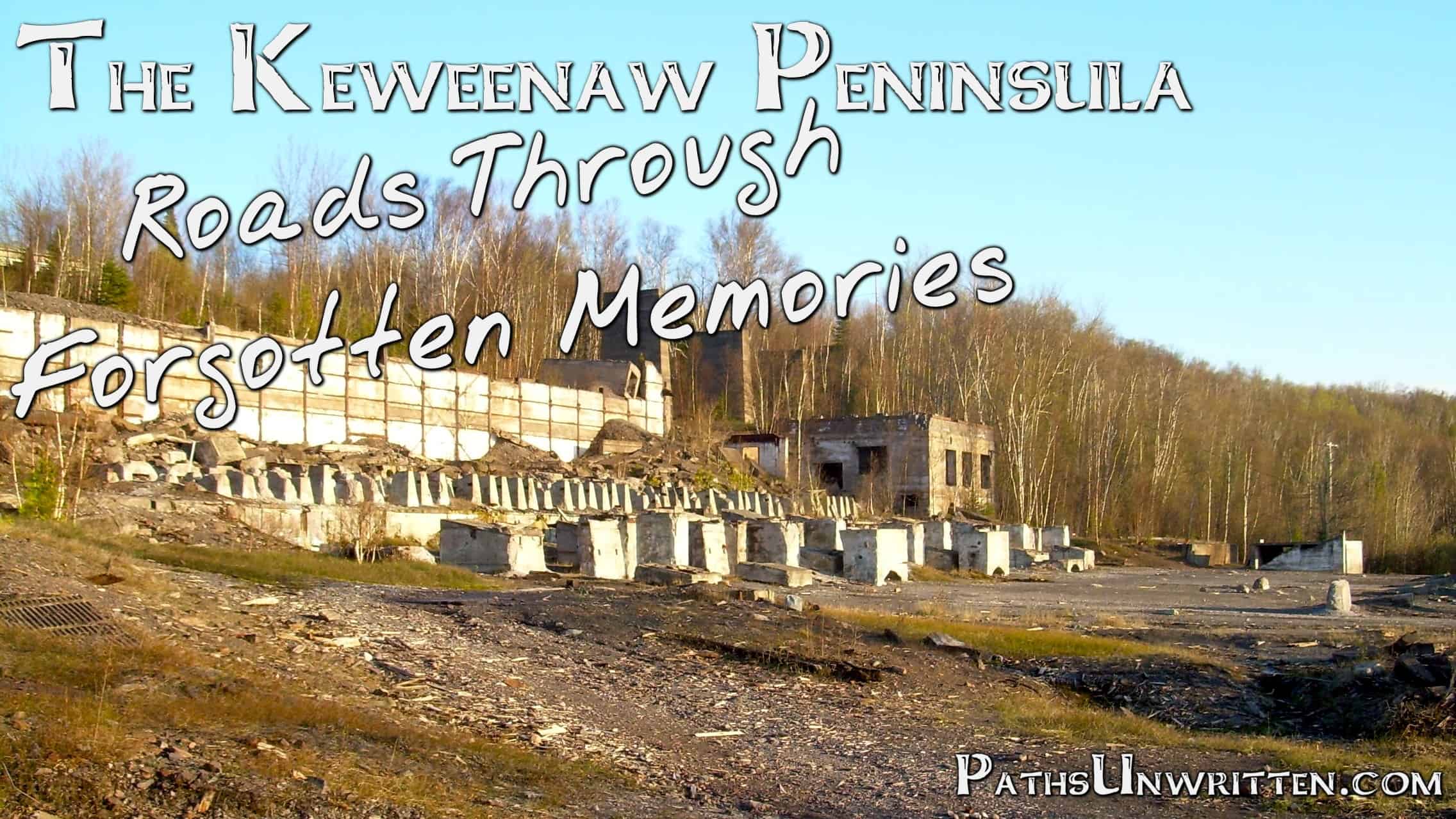 ” . . . the Keweenaw Peninsula,
” . . . the Keweenaw Peninsula,
former home of massive copper and iron ore mines;
setting; snowbound; now in some ways
only a place for ghosts and tourists . . .”
– Ander Monson
Just as the entirety of Michigan’s Upper Peninsula provides a wholly different experience from what someone could expect downstate, the Keweenaw Peninsula, does the same to the Upper Peninsula. It’s a sparsely populated stretch of land once you cross the Portage Channel in Houghton, with small towns dotting the roads where you would expect none.
This is my second time coming to the Keweenaw in the last couple years, the third being thwarted by the Houghton Lift Bridge, a nostalgically attractive antique that provides the only way across the Channel, which in all truth makes the Keweenaw Peninsula an Island.
There are two roads leading out of Copper Harbor back to Houghton, US 41 and M-26. It’s advisable to travel both routes, as most travelers are likely to be making a round trip. Each one offers something different.
M-26 is a much grander sight, as it hugs the Lake Superior shore along the north side of the Peninsula. Here you will find everything ranging from craggy and sandy beaches, cliffs and the occasional waterfall, to many ornate houses which are more likely than not occupied only a few weeks a year.
The road also splits off onto Brockway Mountain Rd, which rises and runs along the top of the mountain, providing a few spectacular vistas when the trees break, before it meets back up with M-26 in Copper Harbor.
One of the more remarkable highlights along M-26 is the Holy Transfiguration Skete, a monastery run by the Society of St. John. The building, as you will notice is an architectural splendor of woodworking. The monastery sustains itself through its Jampot business, a well-known shop a couple hundred meters down the street that specializes in jam preserves, fruitcakes, and other baked goods. They also take in retreatants who wish to join in their secluded and basic lifestyle.
US 41 cuts up through the center of the peninsula, providing much different scenery. Following a path through a mixture of forests and barren fields, before running alongside the cliffs of Brockway Mountain the rest of the way to Copper Harbor.
It also it passes several vestiges of towns. While many of these, like a few other towns in the UP, could be considered ghost towns, faded remnants of the area’s former copper mining days, each of them has an appeal for those who are willing to look for it. There is an abundance of antique shops along this stretch road, likely supplied from the hundreds of abandoned buildings scattered throughout the peninsula.
While all of these towns share a common feel and look, each also has a sense of uniqueness in its own quirks. One curious feature is how often they turn into new towns, with a new “Welcome to” sign every half kilometer it seems, even when theirs no break in the sprawl. Most of them have names that don’t even appear on the most detailed maps.
There are a few of note though:
-
Calumet/Laurium– For all practical matters, Calumet and Laurium are the same town, with only US-41 serving as the de facto border. The architecture between the two is noticeably different though. While Laurium is physically larger, with more wooden homes, the downtown area of Calumet and it’s larger, stone buildings are significantly more impressive. This is somewhat understandable, since at it’s height during the copper boom, it was considered as a state capital for Michigan. Among it’s main attractions are the Red Jacket Brewery, the Calumet Theater, and the main downtown strip which has an excellent local book store, among other interesting vendors. It also boasts an interesting abandoned industrial park.
-
Eagle River– Essentially a beachside ghost town with a few cliffs and the ruins of an old dam. Home to several resorts, its most attractive feature is a Christian camp named Gitche Gumee which has been empty and free for exploration every time I’ve been there. There is some nice architecture and the town has an almost overly quiet peacefulness to it.
- Eagle Harbor – Another beautiful beach town along M-26, the sandy beaches are interspersed with rocky outcrops and islands. The ghostly silhouettes of Great Lakes freighters are no strangers to this town’s horizon either, providing a surreal view as you gaze west into the dusk.
-
Gay – A small town way off the main roads that was built around a single factory founded by a man named Joseph Gay. The town today is dominated by the 265-foot smokestack and the remains of the factory. It is also home to the Gay Bar, which shamelessly capitalizes on its name with innuendos printed on items readily available on their website.
Driving through these areas, the thought comes to mind about the people born and raised in a place like this. It’s so far away from any semblance of an actual city. The closest decent sized town is Houghton, with the closest “real” city being Milwaukee.
I grew up in a decent sized city in Grand Rapids, but when placed into something larger, a real city like Boston or Toronto, the scale sometimes overwhelms me, even with my self-declared inherent city-person nature. It really gets me wondering what someone growing up in a place so sparse and isolated would think when introduced to an urban environment?



















